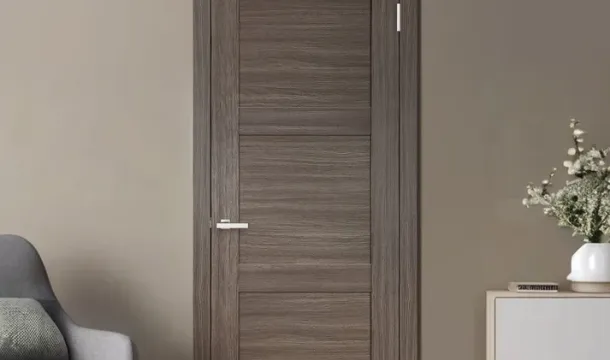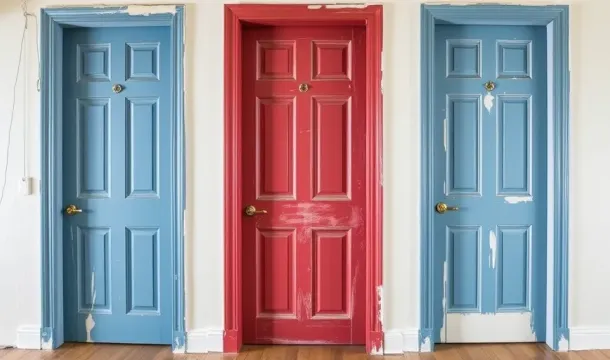Comparing Different Wood Types for Interior Doors - Which is Best for Canada’s Climate?
Popular Articles
When selecting materials for indoor entryways, it's crucial to focus on performance against the unique conditions found in Canada. Comparing various options reveals that certain selections outperform others in terms of durability and resistance to humidity fluctuations and temperature extremes.
Among the most reliable choices are species such as maple, known for its strength and minimal expansion, and oak, which offers excellent resilience while maintaining an attractive appearance. Additionally, bamboo has gained popularity due to its sustainability and impressive stability under pressure.
Understanding how each material interacts with Canadian weather patterns will ensure longevity and aesthetic appeal. Prioritizing these characteristics will lead to informed decisions, enhancing both functionality and style in your living spaces.
Durability in Cold Weather
Choosing materials that withstand frigid temperatures is crucial for longevity and performance. Solid species like oak and maple demonstrate exceptional resistance to warping and cracking, making them ideal choices in harsh environments.
Comparing engineered options reveals that composite doors often outperform solid wood counterparts under temperature fluctuations. Their layered construction helps maintain structural integrity, reducing the risk of moisture-related issues.
Additionally, finishes play a pivotal role in enhancing resilience. Selecting high-quality sealants can prevent moisture ingress, thereby extending the lifespan of the entryway features. Regular maintenance and reapplication of protective coatings are also advisable to combat the effects of cold weather.
In summary, opting for robust materials and utilizing appropriate finishes will significantly improve the durability of your selections against Canada’s severe winter conditions.
Moisture Resistance Considerations
Choosing the right material for doors in a moist environment is essential. Here are some recommendations based on performance in humid conditions:
- MDF (Medium-Density Fiberboard): This engineered product resists warping and swelling, making it suitable for areas with variable moisture levels.
- Plywood: With layered construction, this option provides greater stability against moisture compared to solid timber, reducing the likelihood of deformation.
- Composite materials: Often made from recycled wood fibers and plastics, these can withstand humidity better than traditional options.
When comparing options, consider finishes that enhance moisture resistance. Sealing edges and applying high-quality paint or varnish can significantly improve performance. Regular maintenance also plays a role in longevity; inspect and reapply protective coatings as needed.
- Select materials specifically designed for high-humidity environments.
- Avoid untreated natural products that are prone to absorbing moisture.
- Implement proper ventilation in spaces where doors are installed to minimize moisture buildup.
By focusing on these strategies and material choices, you can ensure that your selections remain durable and functional despite the challenges posed by humidity fluctuations across different regions of Canada.
Energy Efficiency of Woods
Choosing a material with excellent insulation properties is key in the northern regions. Hardwoods like maple and oak demonstrate superior thermal performance, minimizing heat loss during winter months. In contrast, softer varieties such as pine may not provide the same level of energy efficiency, leading to higher heating costs.
When comparing options, consider the density of the species. Denser woods tend to offer better insulating qualities due to their compact structure, which slows down heat transfer. This makes them ideal for maintaining comfortable indoor temperatures despite harsh outdoor conditions.
Additionally, selecting an energy-efficient finish can enhance performance. Natural oils or water-based finishes have less impact on thermal properties compared to heavy varnishes that may create a barrier against airflow. This can help maintain a consistent climate within living spaces.
Investing in well-insulated frames and seals also contributes significantly to overall energy savings. Combining these features with suitable materials ensures optimal performance while reducing reliance on artificial heating systems.
Cost-Effective Wood Options
For homeowners aiming to balance budget and quality, selecting economical materials is key. Softwoods like pine and fir are popular choices due to their affordability and decent performance in residential settings. These options typically offer a good compromise between cost and durability, making them suitable for various environments.
Another economical choice is engineered wood products, such as MDF (medium-density fiberboard) or particleboard. These materials are often less expensive than solid alternatives while providing commendable stability and resistance to warping, especially in fluctuating temperatures.
When evaluating budget-friendly selections, consider the long-term savings associated with lower maintenance costs. Some woods may require more frequent treatments or replacements in harsh conditions, potentially increasing overall expenses over time. Comparing initial costs with durability can lead to smarter financial decisions.
Additionally, local sourcing can reduce transportation costs, making certain types more affordable. Opting for regional varieties not only supports local economies but can also ensure better adaptation to specific environmental factors present in your area.
In summary, prioritizing cost-effective materials like softwoods or engineered options can yield substantial savings without sacrificing too much on performance in your living space.
Aesthetic Appeal and Finishes
Selecting appealing materials for doors significantly enhances interior spaces. In Canada, where visual harmony is paramount, options like maple and cherry offer rich colors and fine grain patterns that can elevate any room’s design. Maple's light hue provides a contemporary look, while the deep red tones of cherry bring warmth and elegance.
When comparing performance in aesthetics, oak stands out with its pronounced texture and ability to hold finishes well. Staining or varnishing these surfaces can accentuate their natural beauty, creating a unique statement piece. For a modern aesthetic, consider using birch; its smooth finish takes paint and lacquer beautifully, allowing for versatile design choices.
Natural finishes enhance the inherent characteristics of these materials. A clear coat on walnut not only protects but also showcases its dark richness, making it ideal for sophisticated interiors. Meanwhile, painted surfaces can provide a fresh and vibrant look, with lighter shades amplifying natural light in smaller spaces.
Textured finishes such as brushed or distressed techniques add depth and character to doors. These treatments can transform standard materials into eye-catching focal points that reflect personal style while maintaining durability against wear.
Lighting plays a crucial role in how these materials are perceived; highlights and shadows interact with wood grains differently throughout the day. Ensuring proper placement of doors allows their aesthetic qualities to shine in various lighting conditions.
Popular Articles

Choosing the Perfect Interior Doors for Your Canadian Home

A Complete Guide to Choosing Interior Doors for Canadian Homes
